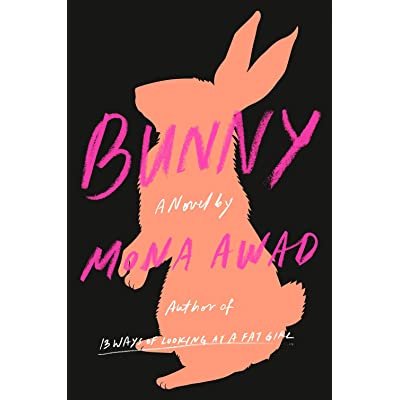Edgar's Book Round-Up, October 2022
Spooky season! Every year, I think, “Ah, Halloween! A fun holiday to dress up and spend time with friends!” and every year, by the time Halloween happens, I’m burnt out and haven’t put together a costume and don’t want to spend time anywhere but my bed. On the plus side, though, I’ve read some really good books, so here’s some stuff about them. Links go to Bookshop, as usual.
※
While technically the first book I finished in October was The Jennifer Morgue by Charles Stross, that’s part of a series of mass-market pulp adventures which number in the severals, and which Cameron has discussed recently elsewhere, so I pass over it to begin with Paul Tremblay’s The Pallbearers Club. The novel, Tremblay’s latest, is written as an ostensible memoir by Art Barbara, a hopeless nerd who starts the titular club while in high school, leading him to befriend one M. Brown. But Art suspects his new friend — a hopelessly cool alternative girl, circa the late 1980s — may be hiding a dark secret, and on top of that, the text of his memoir has fallen into her hands. By incorporating “Mercy”’s edits and marginal notes — and the part of me that has long loved Jeff VanderMeer’s Shriek: an Afterword was entirely won over by that decision — Tremblay opens a rich vein of memory, friendship, and unreality, and it made for a cool book object, too. As I noted to more than one person while reading it, my limited experience with Tremblay’s novels suggests that he’s a master of horror stories where nothing really happens, but the vibes are just rancid. I look forward to reading more of his work.
Next up, we have Tram 83 by Fiston Mwanza Mujila, translated from French by Roland Glasser. The brief novel — and, it is worth noting immediately, Mujila has published primarily poetry — follows a kaleidoscopic tumble of characters through a nameless city in an African nation in disarray, setting as its focal point Tram 83, the only nightclub and the center of the nocturnal life in the city, and loosely orbiting Lucien, a writer recently returned from France, and his sometime-friend Requiem, an up-and-coming criminal force. There’s a lot for the novel to be about, and a lot that it might be saying or suggesting, but coming to Mujila with little context, I was blown away immediately by the sheer force of the language. I can only imagine what Mujila’s French is like; Glasser’s translation is melodic and pyrotechnic, readable and breathtakingly exciting. Comedic, frightening, energetic, and tense, I can really only characterize Tram 83 as a hell of a ride.
The first audiobook in this round-up is The Thirty Names of Night by Zeyn Joukhadar. The novel follows two protagonists: artist Laila Z, whose paintings of birds almost brought her to fame before her mysterious disappearance over fifty years ago, and a closeted trans man, his name effaced, who seeks to learn more about her, since she was his deceased mother’s favorite artist. Following as it does multiple generations of Syrian immigrants in New York, Joukhadar’s tale could easily have become muddled, but he sidesteps every possible pitfall, instead providing an elegant and often hair-raisingly beautiful tale of family, art, and ornithology, with a garnish of magic that heightens the rest of the story. (Also elegant was the decision, in the audiobook, to render effaced names as a scribbling sound, rather than anything else.) I hope soon to read Joukhadar’s previous novel, and I’m excited to follow his career going forward.
Up next is the final print book for this round-up, Walter M. Miller’s prescient, bizarrely Catholic classic, A Canticle for Liebowitz. I’m fairly certain that anyone reading this round-up is familiar with the conceit of the novel (post apocalyptic monks find and venerate the relics of St. Leibowitz — relics including a grocery list, and a lunch box) but to look only at the gimmick is to ignore the many charms of the rest of the novel. Miller renders his several monks with wry humor, and his distinctively pre-Vatican II, distinctively mid-20th-century brand of Catholicism was, for me, utterly charming. But beneath the set dressing of post-nuclear apocalypse and monasticism simmers a churning rage at what Miller positions as a human propensity towards annihilation, coupled with real empathy for people faced with the impossible choices of life in hell. It’s a classic for a reason, and I’m glad to have read it.
I followed it with Yoon Ha Lee’s Phoenix Extravagant, his only adult stand-alone novel (so far!), which follows apolitical artist Gyen Jebi as, in a fit of desperation, they accept a job painting the masks that animate the occupying Razanei force’s automata. But the realities of Razanei occupation, which Jebi had hitherto largely ignored, steadily grow unbearable — and that doesn’t even touch on the beautiful duelist for the ministry, or the dragon-weapon Jebi is made to work on. Like Yoon’s Machineries of Empire books, which I loved and talked about here, Phoenix Extravagant is intimately concerned with the way empire operates, the many violences it does to everyone involved in it, but while the Machineries of Empire novels were largely told from the perspective of people directly involved in military operations, Jebi had sought not to engage with violence in any form; while this can sometimes result in some on-the-nose moments, that’s not necessarily a bad thing. Besides that, Yoon’s storytelling and sheer invention are delightful to experience. Overall, even though it took me a while to get through, I really enjoyed this one.
Next up, in audiobook form, we have Sarah Gailey’s Just Like Home. Much like Gailey’s previous novel, The Echo Wife (discussed here), Just Like Home treads in fraught territory of, well, home, but also explores mother-daughter relationships, art, violence, and haunting. Vera, adrift much of her life after some undisclosed violence in her past, is unexpectedly summoned back to her childhood home by her estranged mother, who is dying. But the house has been strip-mined by visits by artists and writers, seeking inspiration from whatever happened there — and there’s something under Vera’s bed. Gailey handles the various tensions of all these threads, on the whole, extremely well: they’re very good at toxic relationships and women who are bad. There’s a bit of a hard turn in the last quarter of the novel, though, that didn’t quite land for me, a leap from a largely psychological horror into something drippier, which distanced me somewhat from the novel’s ending, but it’s nonetheless a tight, entertaining read.
I followed it with the audiobook of Beloved, Toni Morrison’s classic, Pulitzer Prize-winning novel, read by the author herself. As I’ve mentioned in the past, I’ve had cause to berate myself for not reading Morrison sooner, and Beloved easily and elegantly surpassed all the praise I’ve heard heaped on it. As such, what do you even say? The synopsis — a woman who has escaped from slavery is haunted by her infant daughter — dramatically oversimplifies the plot, smoothing over a stunning array of viewpoints and characterizations, to say nothing of language I can only describe as balletic. I will note that Morrison’s reading activates the text in truly delightful ways, bringing forward poetic juxtapositions and motives that might otherwise have passed me by. Truly, an English masterpiece.
A hard act to follow! But here we arrive at a little flurry of creepy novellas, the first of which was Eric LaRocca’s much-lauded Things Have Gotten Worse Since Last We Spoke. I’ve been curious about this one for some time — not only because my friend and favorite Bookstagrammer talked it up, but also because, having grown up on the internet, I love seeing how other people characterize its wilds. LaRocca does a sterling job, relating, in the form of emails and chat logs, the swiftly-deteriorating relationship between two troubled young women in the early aughts. LaRocca’s prose is viscous and overwrought to an exact degree that’s very much in keeping with online registers — and it’s the prose that really kept me reading, because the characters are defined almost solely by each other, subsumed by self-performance in their deeply toxic relationship. The novella implies another reader, someone who has compiled the “receipts,” as it were, which definitely adds a layer. I will say, the ending fell a touch flat for me, the story deflating rather than truly combusting as I’d hoped it, but it was a quick, fun romp and I’m glad to know what all the fuss is about.
After that, we’ve got A Lush and Seething Hell: Two Tales of Cosmic Horror by John Hornor Jacobs, which Cameron recommended to me (and discussed here, along with some other cosmic-horror concerns). I will say that I almost dipped immediately, because I found Chuck Wendig’s glowing introduction teeth-gratingly annoying, but that would be unfair to “The Sea Dreams It Is the Sky” and “My Heart Struck Sorrow,” the tales in question. The first offers two poets, both living in exile, brought together by their shared homeland and then further entangled by their attempts to translated a deeply cursed Latin text; the second, two archivists each seeking the secret roots of the tale of Stagger Lee. Both stories were appropriately moody, and avoided some of the worst pitfalls of cosmic horror: the characters’ travails felt meaningful to them, even as they were shown to be ultimately fruitless in the face of [HORRORS REDACTED FOR SANITY REASONS]. “The Sea Dreams It Is the Sky” landed for me especially, but that’s partially because you give me a cursed Latin text and I’m immediately interested; it’s a personal failing. I’m definitely looking forward to reading more of the author’s work.
I burned through Clive Barker’s The Hellbound Heart in a matter of hours, which is not terribly impressive except that I was also at work, so you can imagine the kind of time pressure I was under. The inspiration for the several Hellraiser movies, the novella itself feels, frankly, a bit tame, but maybe I’m just jaded. And “tameness,” here, shouldn’t be mistaken for being not good, or sexy, or fun and kind of gross, because it’s very much all of those things. Barker lets the implications linger like a bad taste, and relates the story with a kind of sly, voyeuristic quality that makes everything feel just a little bit worse. Very fun.
We close this round-up with Mona Awad’s Bunny, which I could not help but read in comparison to her subsequent work, All’s Well (reviewed here). There’s more than a little similarity between the two: both focus on disaffected women at fairly elite institutions, alienated from their peer groups and homoerotically attached to a single female friend as plausibly-deniable supernatural events threaten to lose that deniability. While Bunny seems to be more popular — I had to wait for quite some time for it, which did not happen with the more recently released All’s Well — I think I prefer Awad’s more recent outing. There’s a fair of Heathers/Mean Girls/similar in Bunny’s DNA, and while Awad handles the material beautifully, I can’t help but feel a little bit of, “You guys fit in with your peers?” when faced with that kind of story. But it’s undeniably fun, and Awad’s skewering of a particular type of MFA writing is really delicious.
※
That’s it for this month. Follow me and Cameron on Twitter, if you want.






